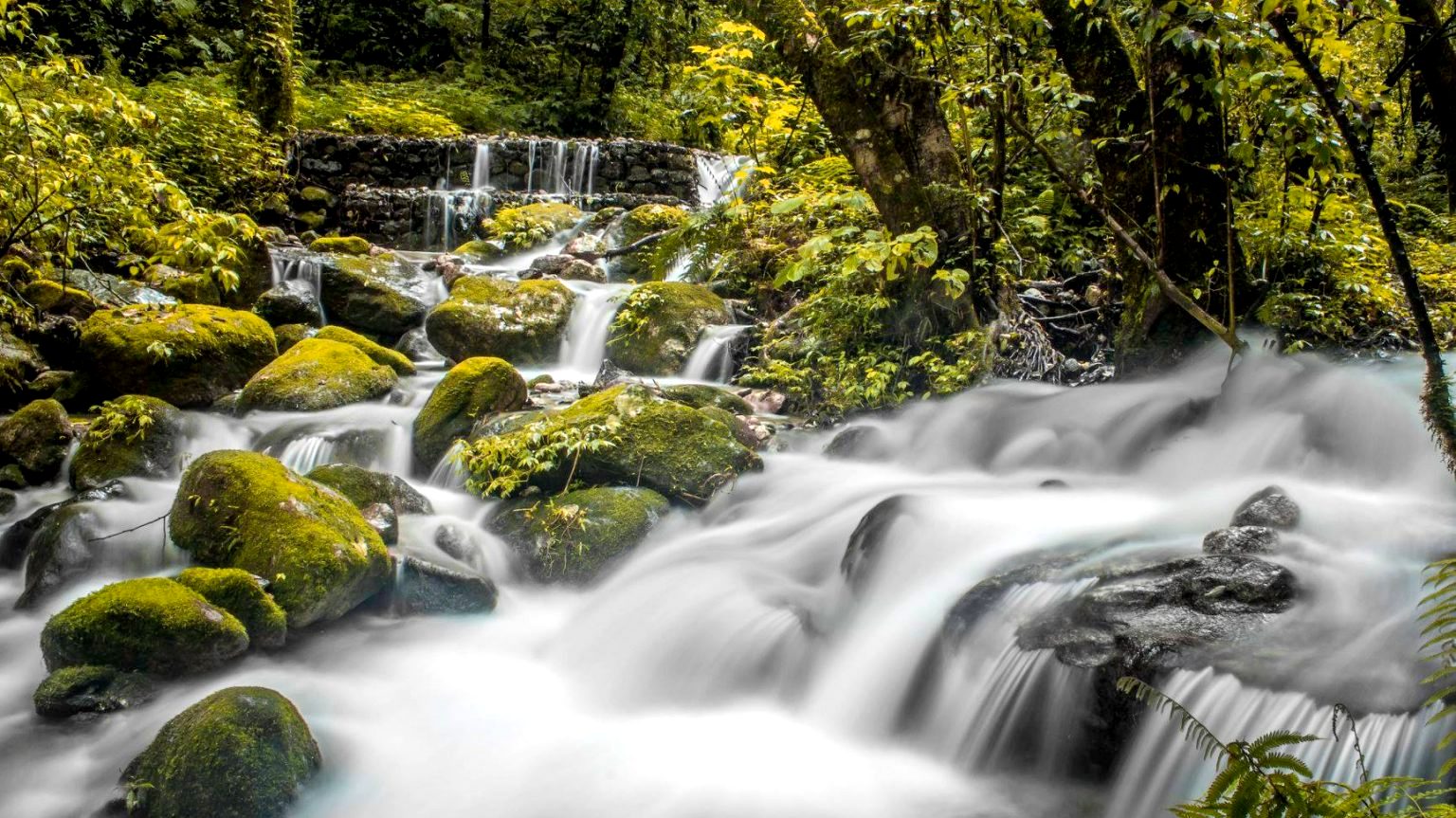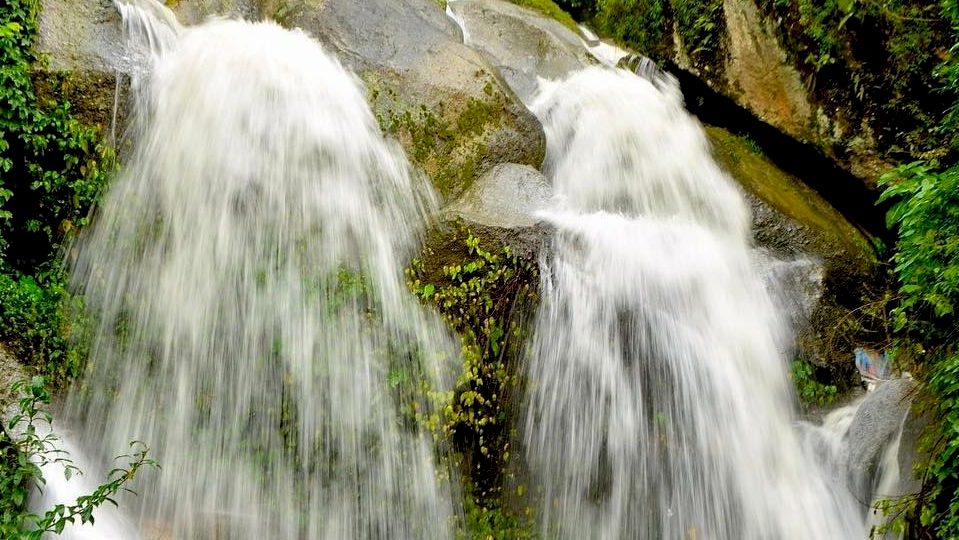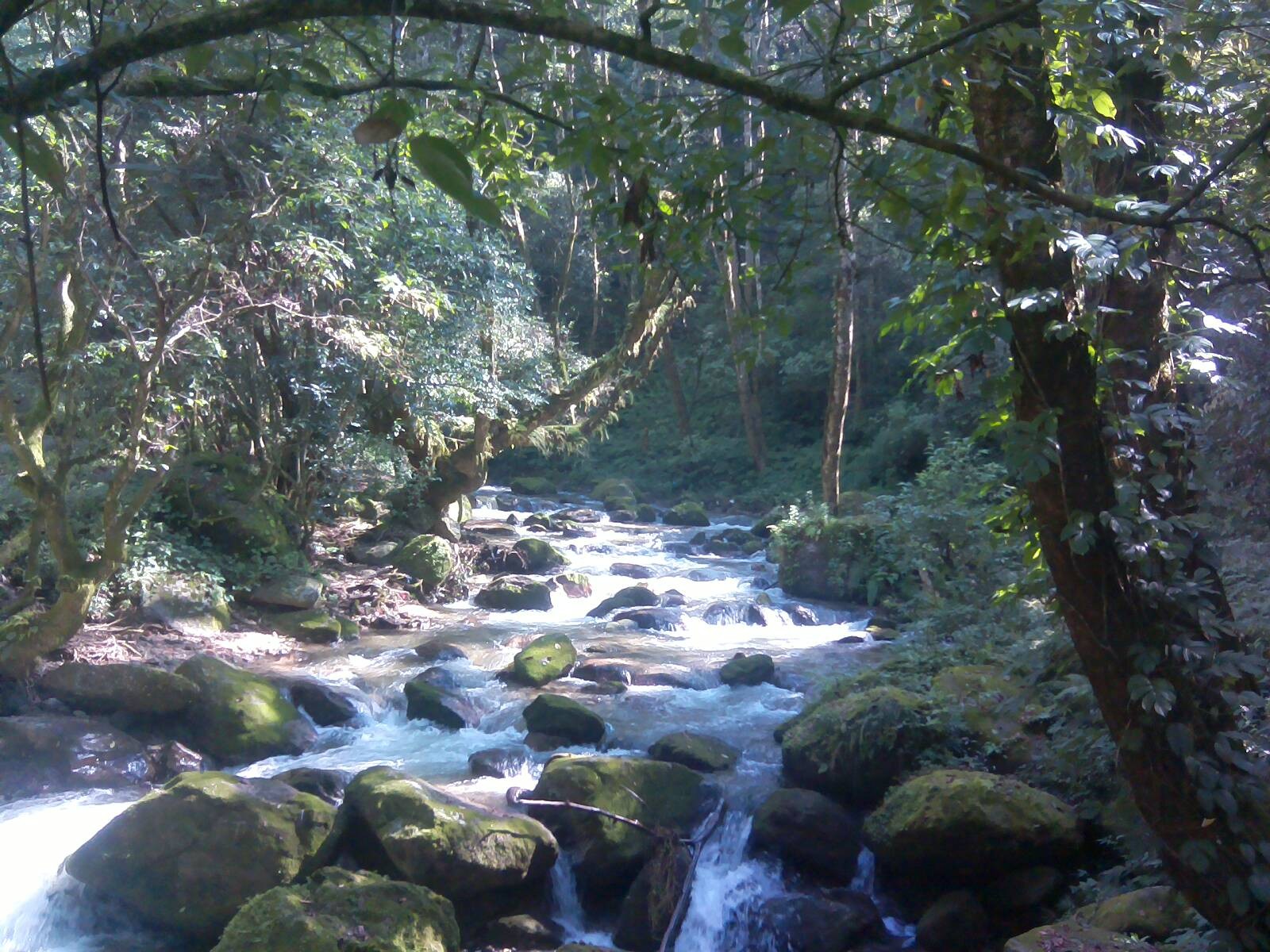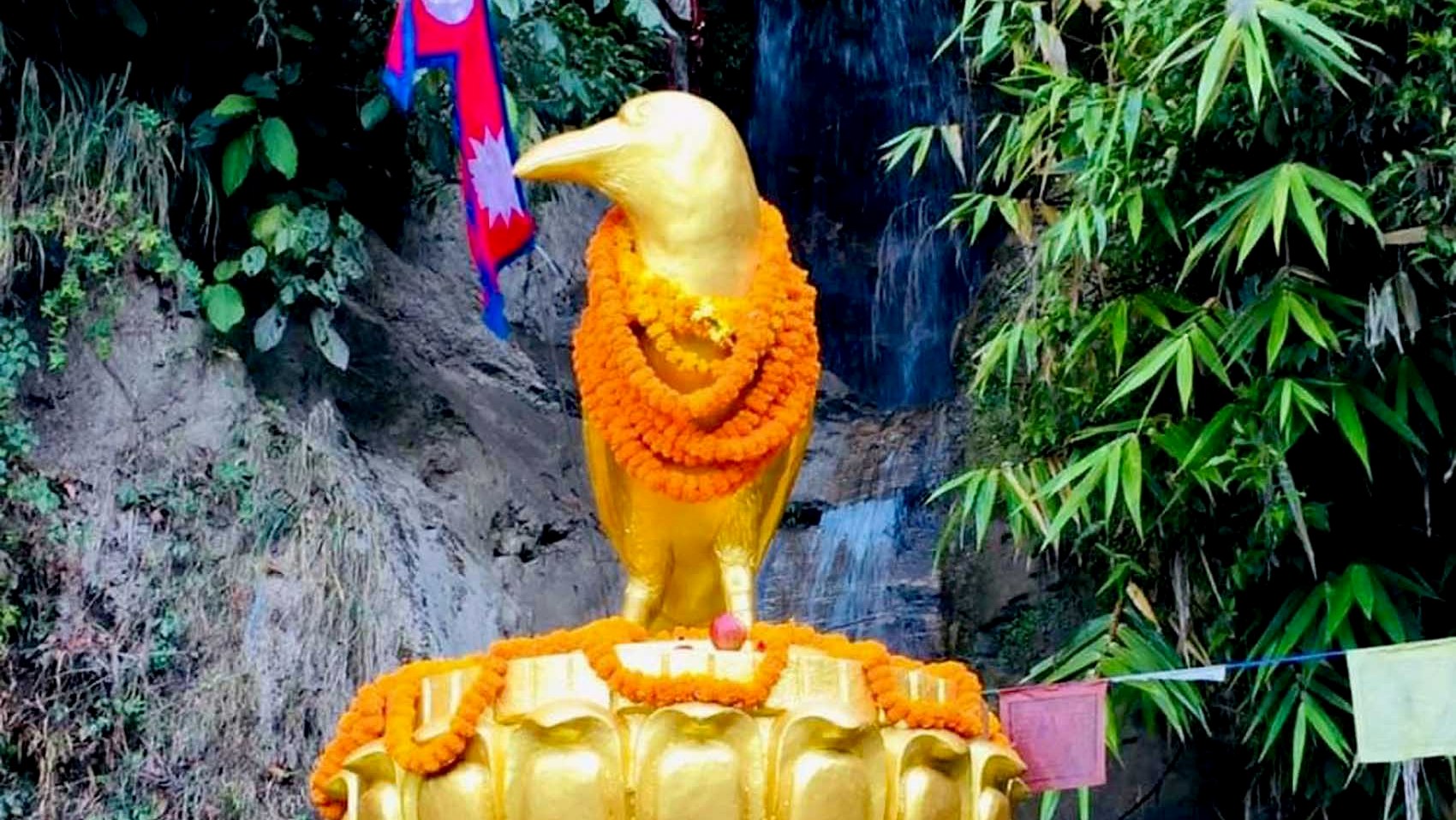Hidden Waterfalls around Kathmandu
Nepal, renowned as the world's second-richest country in water resources, is a treasure trove of aquatic wonders. Beyond its soaring peaks and sacred temples, the nation boasts a plethora of rivers, lakes, streams, and cascades that allure travelers from every corner of the globe. While Kathmandu is famed for its historical and cultural significance, its surroundings also hide countless water spectacles. Some are celebrated tourist magnets, while others remain tucked away, awaiting discovery by the more adventurous.
Waterfalls, in particular, stand out as a prime reason for many a wanderer's journey to Nepal. These natural marvels, with their thundering roars and ethereal mists, offer an unparalleled experience of nature's majesty.

Monsoon season, typically spanning from June to September, is the golden hour for waterfall enthusiasts. As the rains rejuvenate the landscape, the waterfalls around Kathmandu swell, revealing their full splendor. It's during this period that both well-known and concealed cascades in the Kathmandu Valley beckon with an irresistible call. For those seeking a blend of adventure and tranquility, these hidden gems provide the perfect escape.
Highlights of the Hidden Waterfalls Around Kathmandu Valley
Here are the highlights of hidden waterfalls around Kathmandu summarized in bullet points:
- Serene Beauty: Immersed in lush greenery and captivating landscapes.
- Tranquil Escape: A peaceful respite from the urban rush of Kathmandu.
- Monsoon Magic: Witness waterfalls at their mightiest during the rainy season.
- Adventure Beckons: Embark on short hikes or treks to access these hidden gems.
- Cultural Ties: Proximity to ancient towns, villages, and sacred sites adds a cultural layer to the experience.
- Off the Beaten Path: Experience nature without the typical tourist crowds.
- Photographer's Paradise: Captivating vistas that beg to be captured on camera.
- Eco-awareness: As always, prioritize safety and eco-responsibility during visits.
These highlights capture the essence of exploring the hidden waterfalls around Kathmandu, offering a peaceful and refreshing experience in the lap of nature.
Hidden Waterfalls Around Kathmandu
The following are some of the water paradises around Kathmandu that you must visit:
Jhor Waterfall: Kathmandu's Hidden Oasis
Nestled in Tokha, Mahankal, Jhor Waterfall stands as a cherished aquatic gem in the Kathmandu valley. This enchanting cascade draws its life from the pristine waters of the Shivapuri National Park, lying on the cusp of the Kathmandu and Nuwakot districts. The result is a waterfall set against a backdrop of vivid greenery and arresting natural splendor.
However, Jhor isn't just about its waterfall. The site boasts the mystical Baundeshwor Temple, nestled within the caverns of the Baundeshwor Cave. Legend speaks of this temple as nature's own creation, weaving a tale that beckons history enthusiasts and the spiritually inclined alike.

The Outstanding Aspect of Jhor Waterfall
- A Nature Lover's Retreat: Beyond its cascading beauty, Jhor offers expansive fields, dense forests, and a tranquil environment — a stark contrast to Kathmandu's urban sprawl.
- Recreation and Relaxation: The waterfall's vicinity makes for a favored picnic spot, where families and friends converge for moments of laughter and leisure.
- Ease of Access: Whether you're an adventurer setting out on foot, cycling through the trails, or someone looking for a breezy drive, Jhor is comfortably accessible for all.
In the ever-evolving canvas of Kathmandu's attractions, Jhor Waterfall emerges as a versatile destination. Whether you're diving into its refreshing waters, seeking solace at the temple, or simply picnicking amidst nature, Jhor offers a rejuvenating experience away from the everyday hustle.
Simba Falls: An Enchanted Oasis in Manikhel Village
Tucked away in the heart of Manikhel Village in Nepal's Lalitpur district lies Simba Falls, a mesmerizing cascade that stands as the village's best-kept secret. Just 40 kilometers from the bustling capital, Kathmandu, this secluded haven sits majestically at nearly 2,000 meters above sea level.
Manikhel, with its deep-rooted traditions, is predominantly the home of the Tamang community. A people celebrated for their warmth and graciousness, the Tamang have christened this assembly of over five cascades as "Simba Waterfall" - translating to "beautiful waterfall" in their native tongue.
Getting to Simba involves more than just getting there:
- Scenic Journey: A walk of about 45 minutes to an hour, enveloped by verdant landscapes and an ambiance of tranquility, leads visitors to this serene wonder.
- A Nature Lover's Dream: Simba's pristine setting, accentuated by its crystal-clear water and flourishing flora, offers a balm for the soul, making it an ideal retreat for those seeking solace and inspiration.
Embarking on a journey to Simba Falls is akin to stepping into a realm untouched by time. Far removed from urban chaos, this hidden gem presents a rare chance to experience nature in its purest form, bond with the gracious Tamang community, and etch memories amidst the tranquil embrace of Manikhel's green haven.
Sundarijal Waterfall: Kathmandu's Natural and Spiritual Retreat
Just 17 kilometers northeast of Kathmandu lies Sundarijal, aptly named "Beautiful Water." This cherished oasis is not just a gateway to the esteemed Shivapuri National Park but a magnet for nature lovers and spiritual seekers alike.

The significant elements of sundarijal Waterfall
-
Versatile Activities: From day hikes, cycling excursions, and picnics to the exhilarating joys of swimming and canyoning, Sundarijal caters to a spectrum of adventurers. But a word to the wise: canyoning is an activity best pursued with the expertise of a seasoned guide.
-
Natural Springs: The region boasts pristine waters, notably the Baghdwar spring, revered as the genesis of the Bagmati River.
-
Religious Resonance: Beyond its natural allure, Sundarijal is a beacon for the spiritually inclined. The temple of Sundari Mai stands as a testament to this, with lore suggesting that washing one's face with its water grants beauty. This draws both curious travelers and devout pilgrims.
Sundarijal is more than just a sightseeing spot; it's an experience. Its fusion of scenic splendors, adrenaline-packed activities, and profound spiritual significance make it an unmissable destination in Kathmandu's rich tapestry. Whether you're in pursuit of adventure, tranquility, or spiritual enlightenment, Sundarijal promises a memorable retreat.
Kageshwori Jharana: A Spiritual Retreat Amidst Nature
Situated a mere 25 kilometers northeast of Kathmandu lies Kageshwori, a revered Hindu sanctuary imbued with legends and natural wonders. The etymology of "Kageshwori" intertwines the sacred crow, "Kag," with the divine, "Ishwori." In this sacred land, crows aren't just birds but are seen as divine messengers, symbolizing both sorrow and reverence.

Highlights of Kageshwori Jharana
-
The Crow Connection: At the heart of Kageshwori temple stands a crow statue, drawing believers who offer food as worship, cementing the bond between the divine and the avian messenger.
-
Festival of Tihar: This festival of lights sees an influx of pilgrims at Kageshwori, all congregating to honor and seek blessings from the revered crows.
-
The Hidden Gem - Kageshwori Jharana: Beyond its spiritual aura, Kageshwori boasts a less-known but mesmerizing waterfall, adjacent to the Shiva temple. This cascade offers a refreshing visual treat amidst the tranquil surroundings.
A sojourn to Kageshwori Jarana promises more than just scenic beauty. It's where spirituality dances with nature, offering visitors an enriching and soul-soothing experience that lingers long after the journey ends.
Bishnudwar Waterfall: Where Nature and Divinity Converge
Situated at the source of the revered Bishnumati River, Bishnudwar is more than just a scenic marvel. Nestled atop Shivapuri hill, this destination encapsulates Kathmandu's natural and spiritual essence. With "Bishnumati" signifying "Lord Bishnu's Beloved," Bishnudwar is steeped in religious fervor, cherished by both Hindus and Buddhists.

A Journey to Remember:
- Commencing at Budhanilkantha: A renowned Hindu pilgrimage site, Budhanilkantha is the starting point for a journey to Bishnudwar. A mere half-hour walk leads to Shivapuri National Park's entrance, a haven for hikers and nature enthusiasts.
- Shivapuri's Embrace: Upon entering the national park, after a nominal fee, you're welcomed by a thick blanket of verdant nature and the invigorating scent of the forest. As you tread deeper, the melodious sound of cascading waters beckons, hinting at the waterfall's proximity.
- The Marvel of Bishnudwar: As the terrain morphs into a cave-like setting, the Bishnumati River unveils itself as a majestic waterfall, surrounded by mysterious wet caves.
Bishnudwar's Enchantment: With its breathtaking vistas, the Bishnudwar Waterfall offers visitors a haven to splash, play, or simply meditate upon nature's grandeur. Its unique blend of spiritual resonance, captivating natural allure, and tranquil ambiance positions Bishnudwar as a must-visit jewel in Kathmandu's crown.
Nagarkot Waterfall: An Oasis of Serenity Near Kathmandu
Just 25 kilometers from the bustling city of Kathmandu lies Nagarkot, a sanctuary for nature enthusiasts. Despite the challenging route marked by rugged terrains, the destination promises unparalleled scenic beauty.
Amidst the verdant hills, the crisp mountain air carries the melodies of avian life. Especially during the monsoon, the view from Jalpa Devi temple is awe-inspiring, portraying the valley in all its glory. Not far from here, a short trek unveils Nagarkot's hidden treasure: a spectacular waterfall.

The Essence of Nagarkot Waterfall:
- Solitude's Embrace: At Nagarkot waterfall, visitors often find a sense of solitude, feeling as though they've stumbled upon their own private sanctuary.
- Nature's Symphony: The cascade's roaring crescendo, harmonizing with the subtle rustle of dense forest foliage, offers a therapeutic experience.
- Flora's Elegance: The region is distinguished by its lush forests and varied vegetation, amplifying the allure of the waterfall.
Nagarkot is a quintessential stop for anyone visiting Kathmandu. The harmonious blend of its pristine waterfalls, rich greenery, and tranquil surroundings is bound to captivate hearts and craft memories that linger.
Tindhare Jharna: Nepal's Hidden Gem Echoing "Bahubali" Fame
Nestled in Kaphal Danda of Roshi Rural Municipality, within the Kavre district, lies Tindhare Jharna—also revered as Bahubali Jharna. Towering at a staggering height of approximately 300 meters and perched at an elevation of 1800 meters, this waterfall became a sensation during the 2020 COVID-19 pandemic. A single photograph of its majestic flow went viral, drawing uncanny resemblances to the iconic waterfall from the Bollywood blockbuster "Bahubali."
A mere 3.5-hour drive from Kathmandu to Kafal Danda unveils this masterpiece of nature, which stands approximately 45 kilometers from Dhulikhel. The trek, surrounded by verdant hills, dense forests, and distant mountain silhouettes, culminates in 45 minutes, revealing the waterfall in all its glory.

The Enchantment of Tindhare Jharna:
- Visual Splendor: The forceful descent of water, combined with the ambient sound of its cascades, instills both wonder and peace.
- Nature's Retreat: This location serves as an oasis for those seeking the refreshing touch of pristine waters amidst the bustling Kathmandu Valley.
A visit to Tindhare Jharna is akin to a rejuvenating escape, a communion with Nepal's untamed beauty. Beyond just a visual delight, it promises lasting memories for nature aficionados and thrill-seekers alike.
Things to consider while visiting Hidden Waterfalls Around Kathmandu
Visiting hidden waterfalls around Kathmandu can be an exhilarating experience, but it's essential to be prepared and mindful. Here are some things to consider while visiting these natural wonders:
- Research Ahead: Before setting out, research the location, accessibility, and any cultural or religious significance associated with the waterfall.
- Travel with a Guide: Especially if you're not familiar with the area, hiring a local guide can help you navigate the trails, understand local customs, and enhance the overall experience.
- Safety First: Waterfalls can be dangerous. Slippery rocks, strong currents, and sudden drops are common risks. Always stay on designated paths and heed warning signs.
- Appropriate Footwear: The terrain can be uneven and wet. Wear sturdy, water-resistant hiking shoes with good grip.
- Weather Check: The monsoon season can change waterfall conditions dramatically. Check weather forecasts and be prepared for sudden changes.
- Respect the Environment: Leave no trace. Carry out what you carry in, avoid disturbing wildlife, and don't pick plants.
- Local Customs: Some waterfalls may have religious or cultural significance. Dress modestly and follow local customs or rituals.
- Stay Hydrated and Pack Snacks: It can be more physically demanding than anticipated, especially in the heat.
- Avoid Overcrowding: The charm of hidden waterfalls is their seclusion. Visit during off-peak hours or days.
- Capture the Moment: Bring a camera or smartphone, but ensure they're protected from water. Drones, if considering using one, should be used responsibly and with the necessary permissions.
- Notify Someone: Always let someone know where you're going and when you expect to return, especially if you're traveling to a lesser-known spot.
- Check Accessibility: Some waterfalls might require long hikes or may not be accessible during certain times of the year.
- Carry Essential Supplies: This includes first aid, a whistle, a flashlight, and insect repellent.
- Stay Informed: Some waterfalls might be on private property or require a fee or permit. Check this in advance.
- Plan for Emergencies: Ensure you have a way to communicate or call for help, especially in more remote areas.
- Stay Updated: Conditions can change. A waterfall that was accessible a year ago might be closed off due to various reasons.
Being prepared and respectful ensures a memorable and safe experience while enjoying the hidden waterfalls around Kathmandu.
Please, click here for the various tours & trekking packages in Nepal.
If you need any further information, please contact us, Email: [email protected], Phone: +977- 985 100 5129 (WhatsApp)
#Tags
Tripadvisor
5.0928 reviewsGoogle
4.8114 reviewsFacebook
4.1 recommend44 ReviewsTrustpilot
4.1 Great(5 reviews)- Trusted by50K plus traveller



